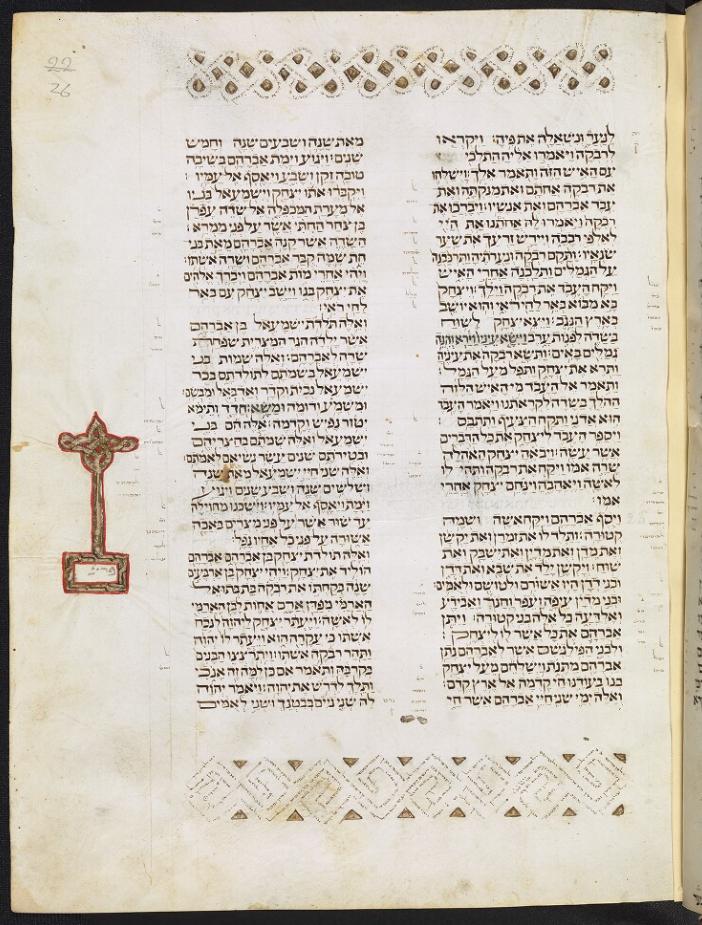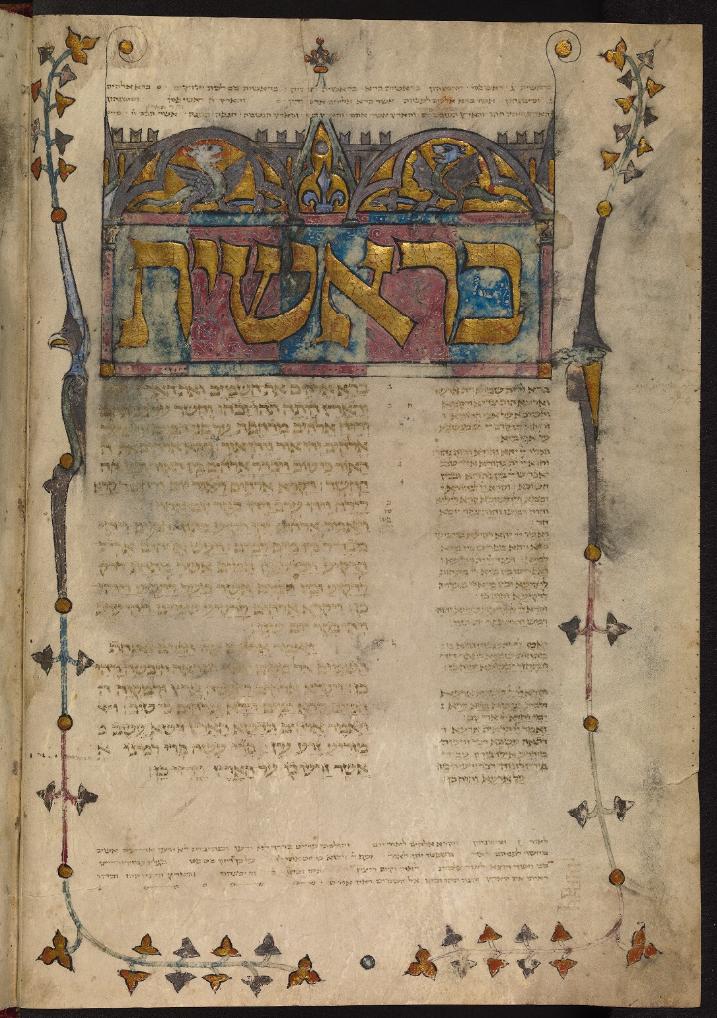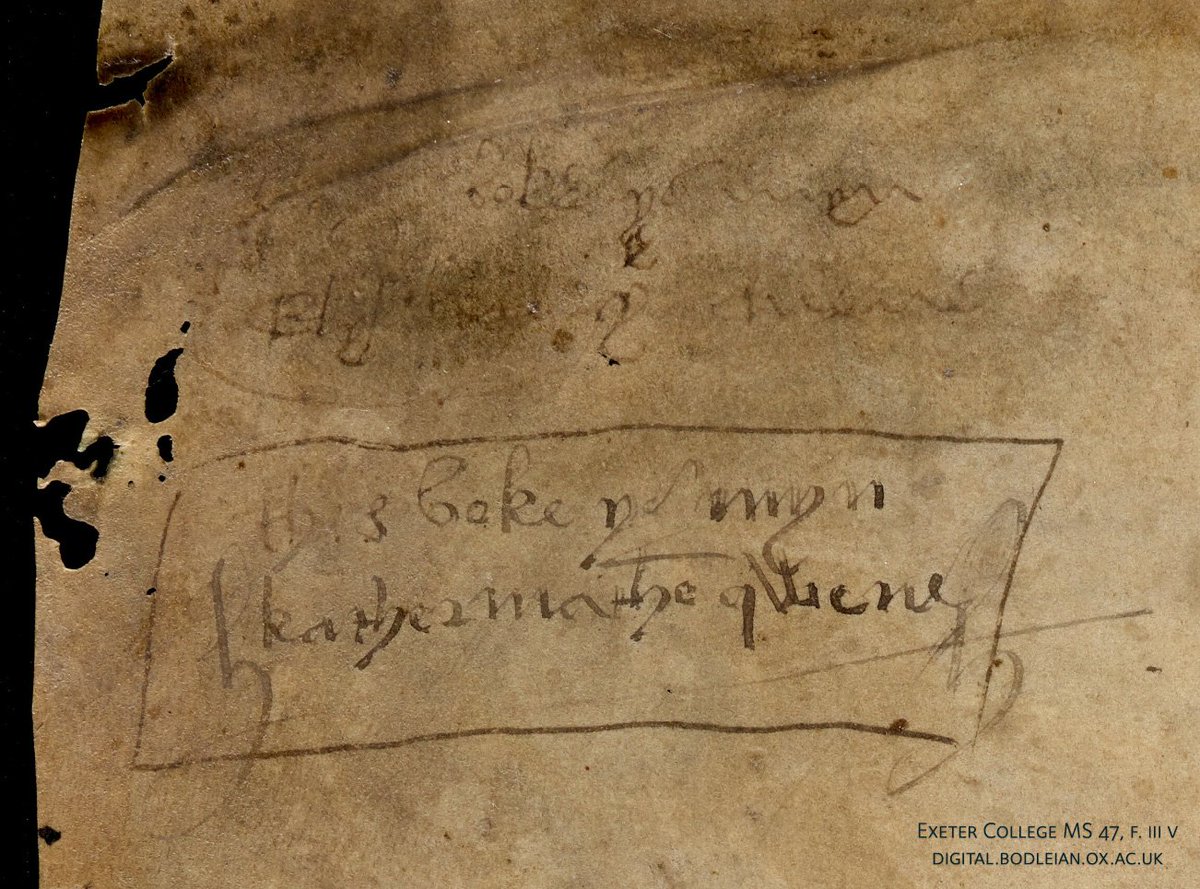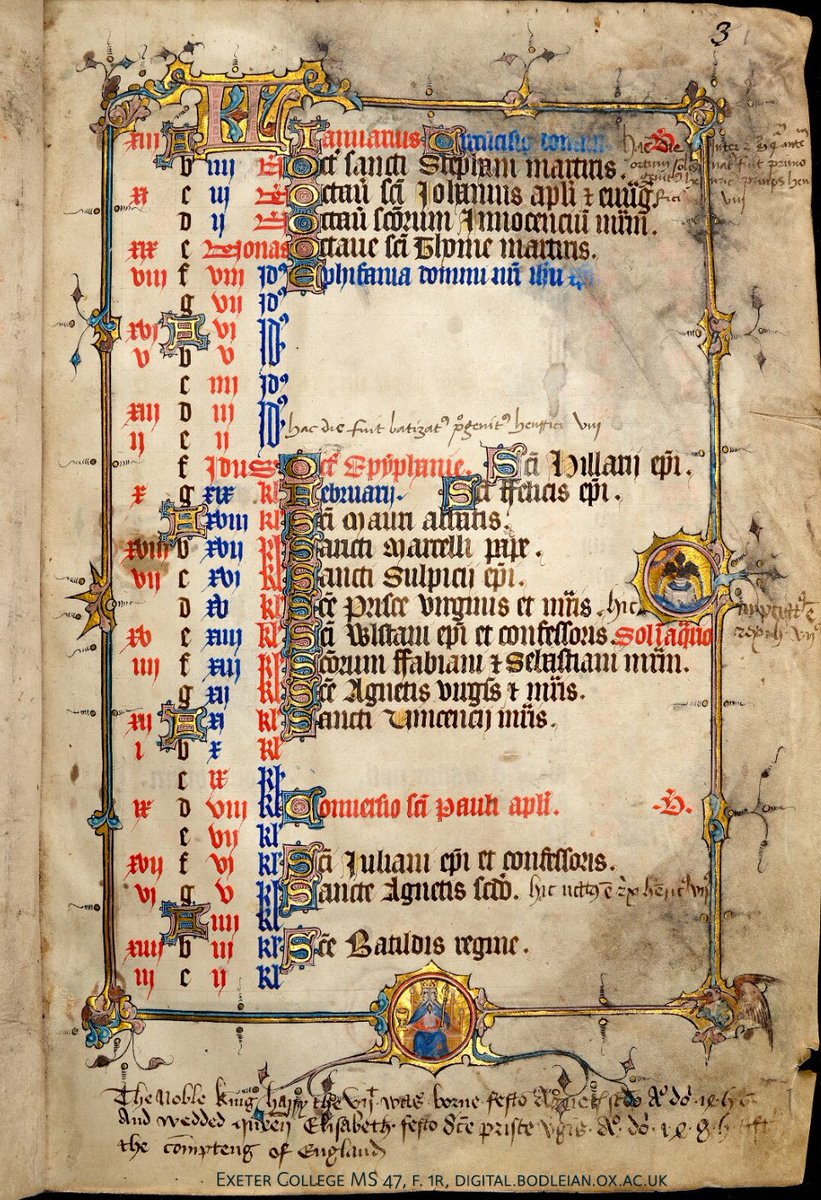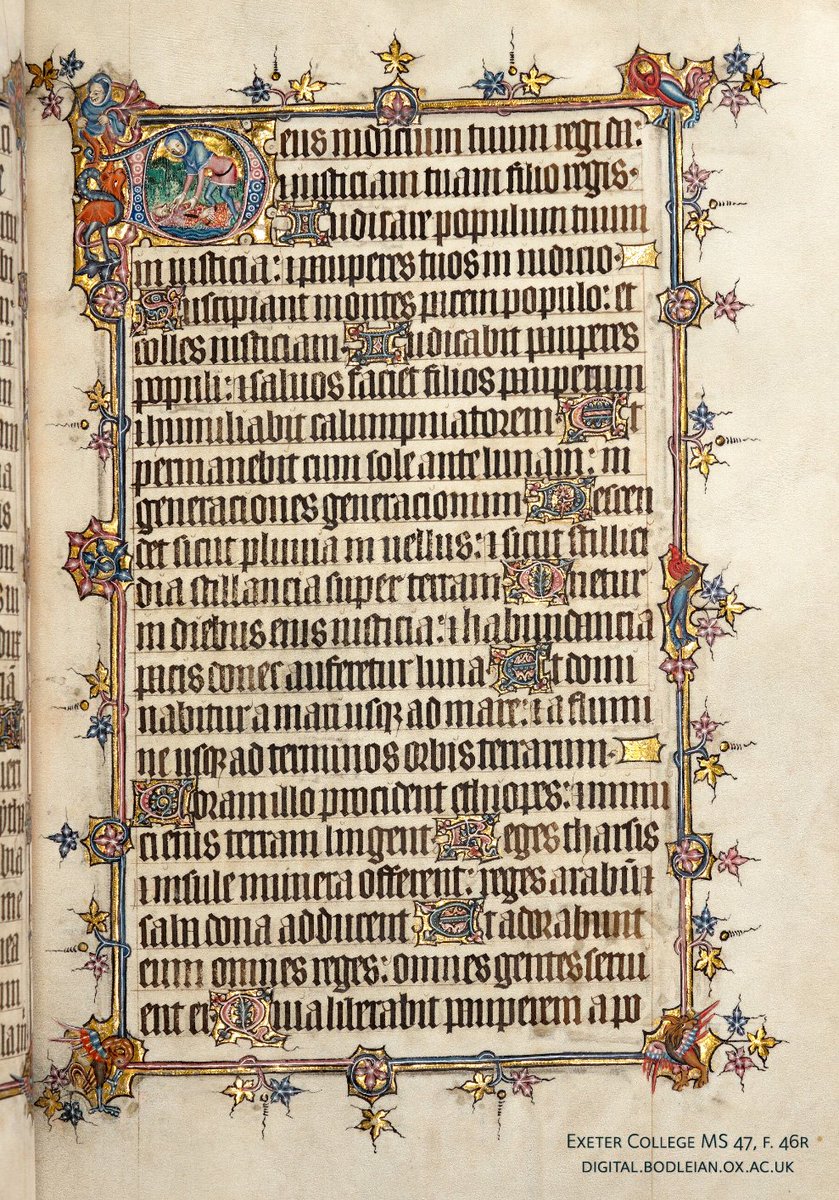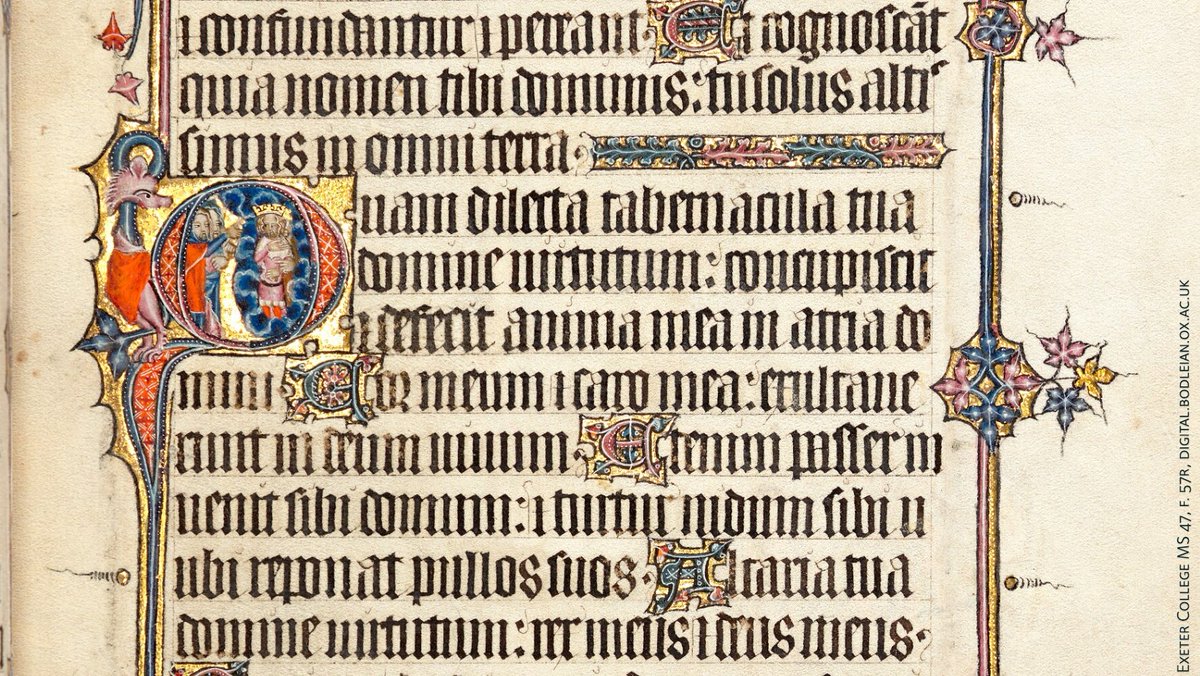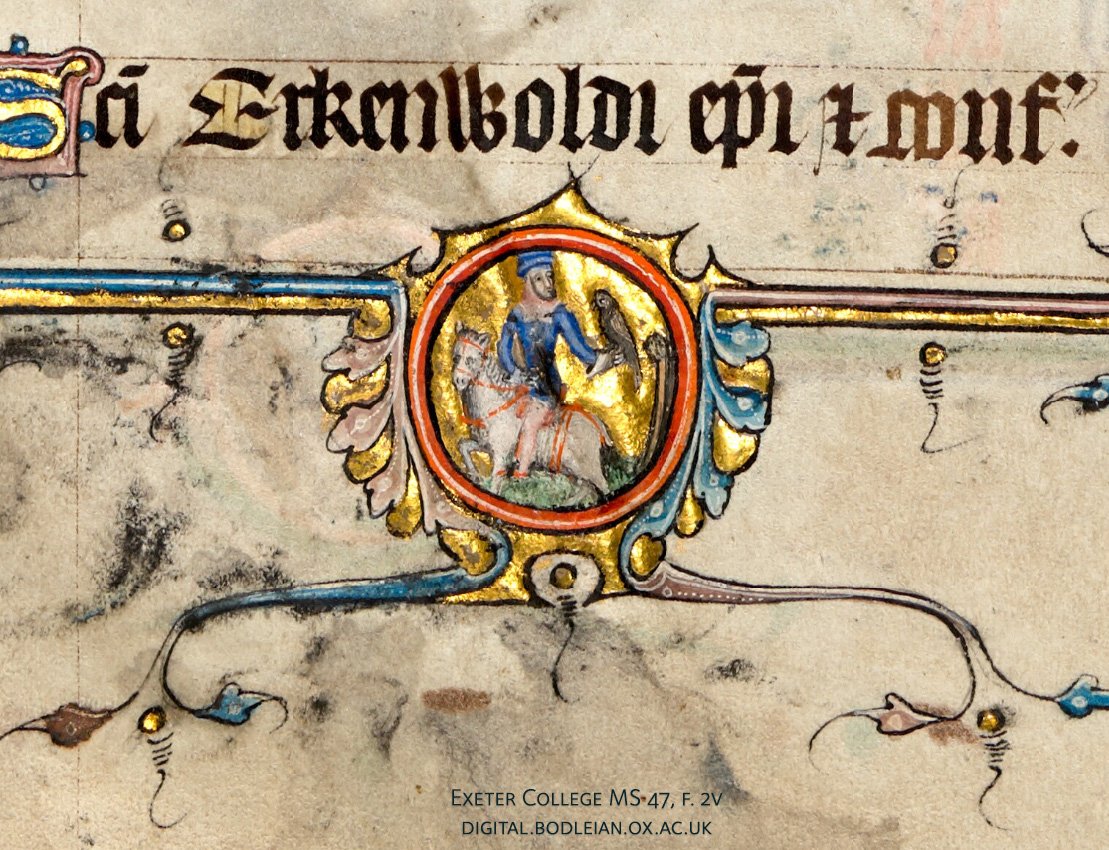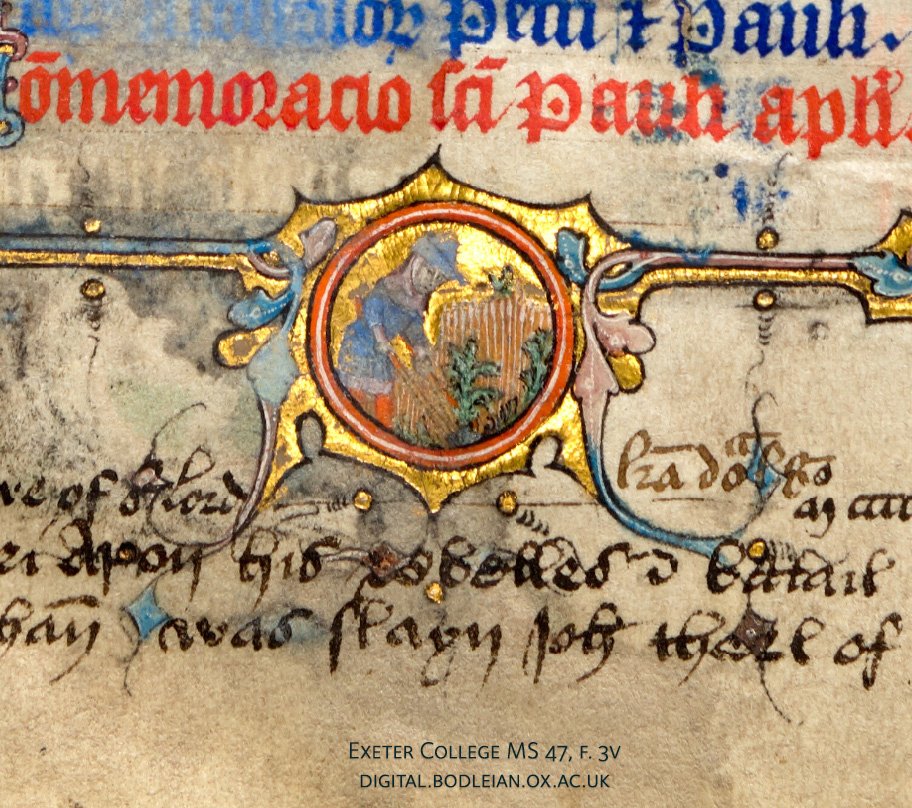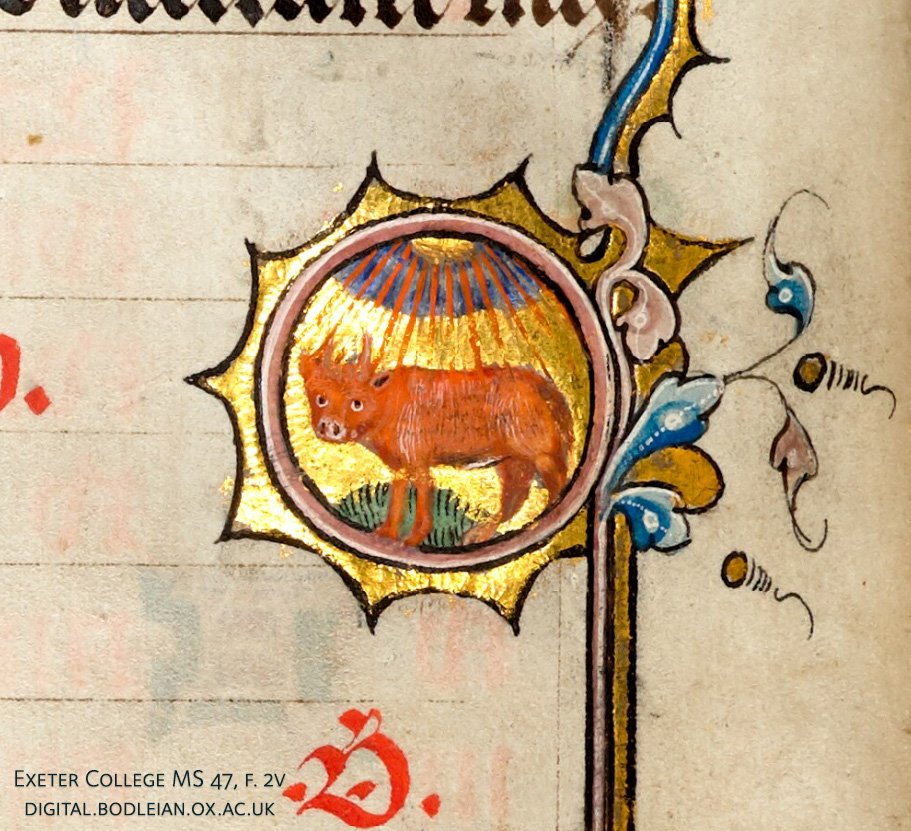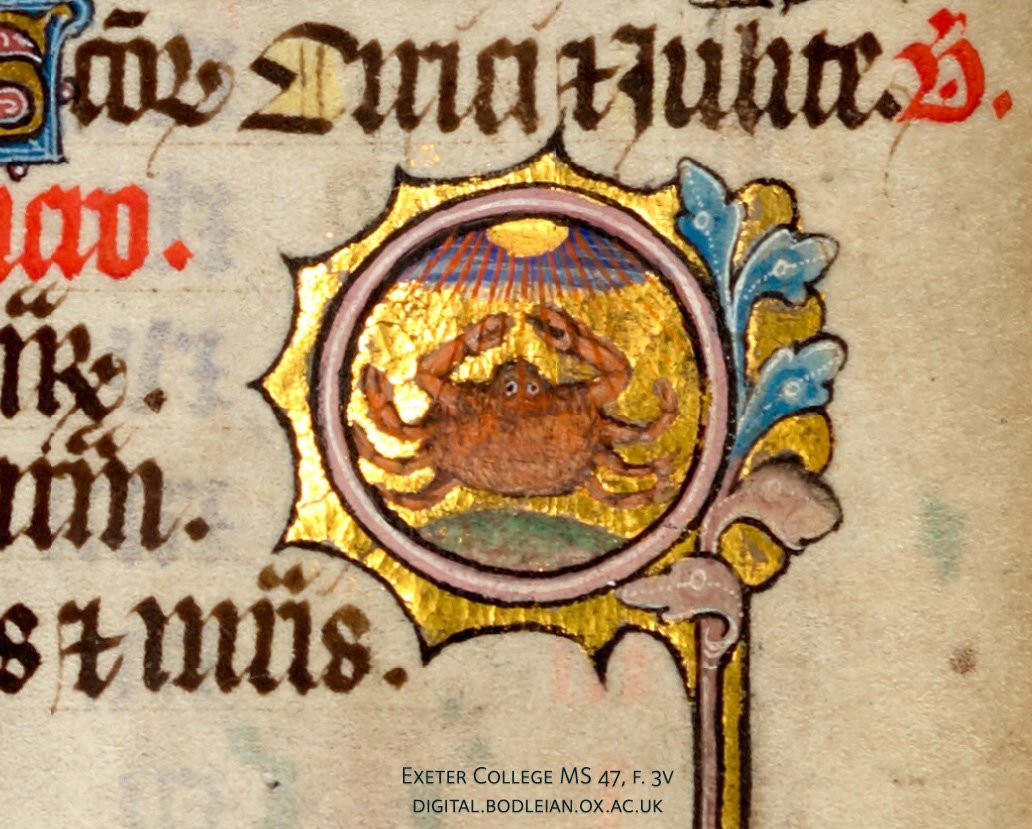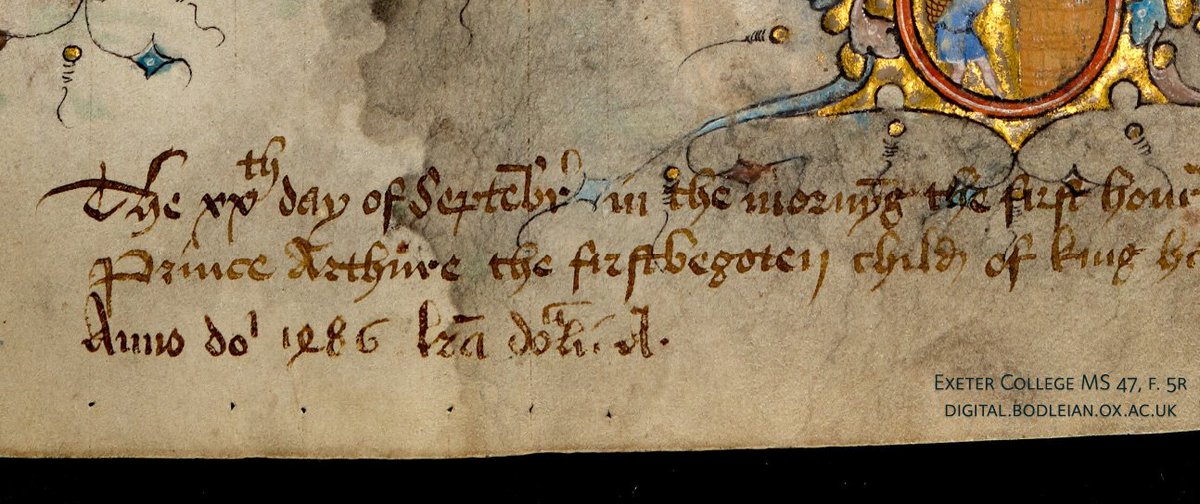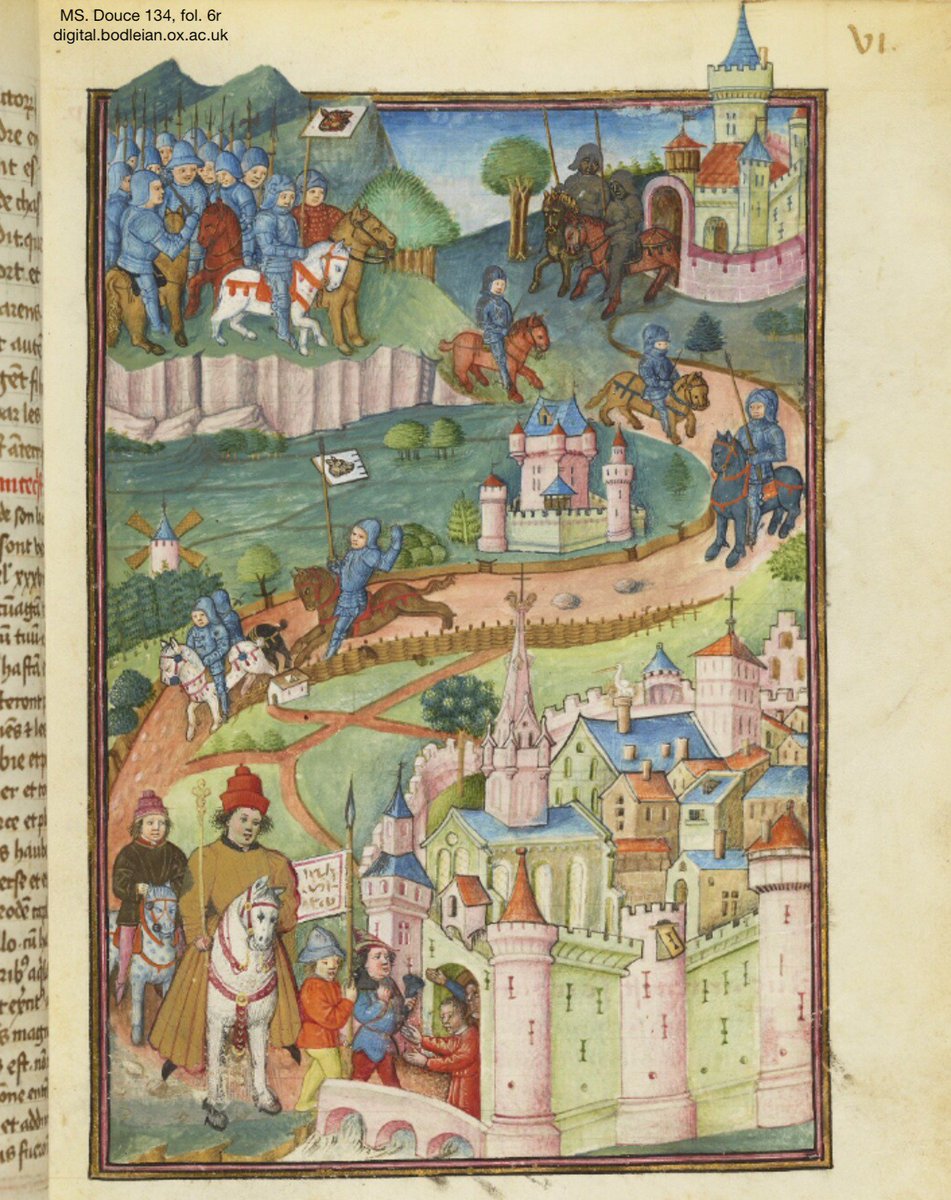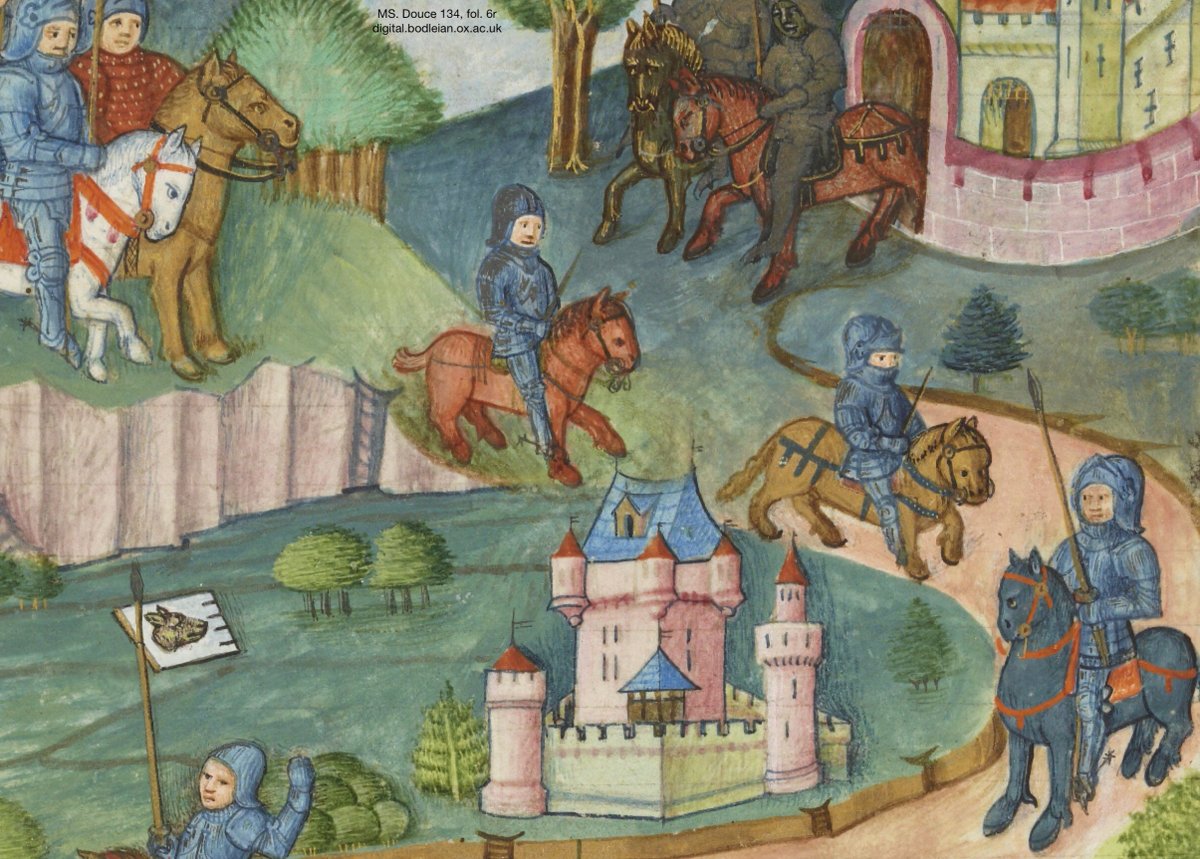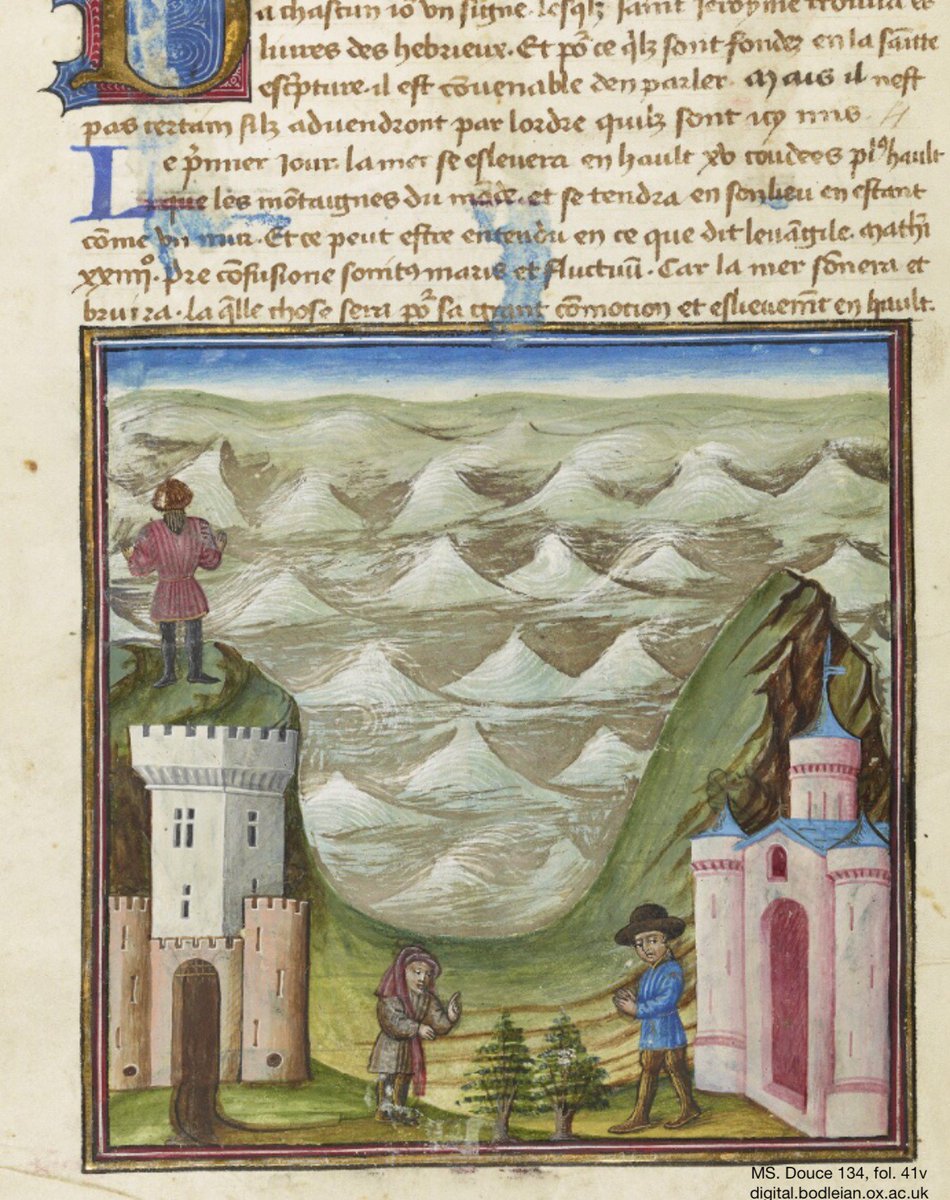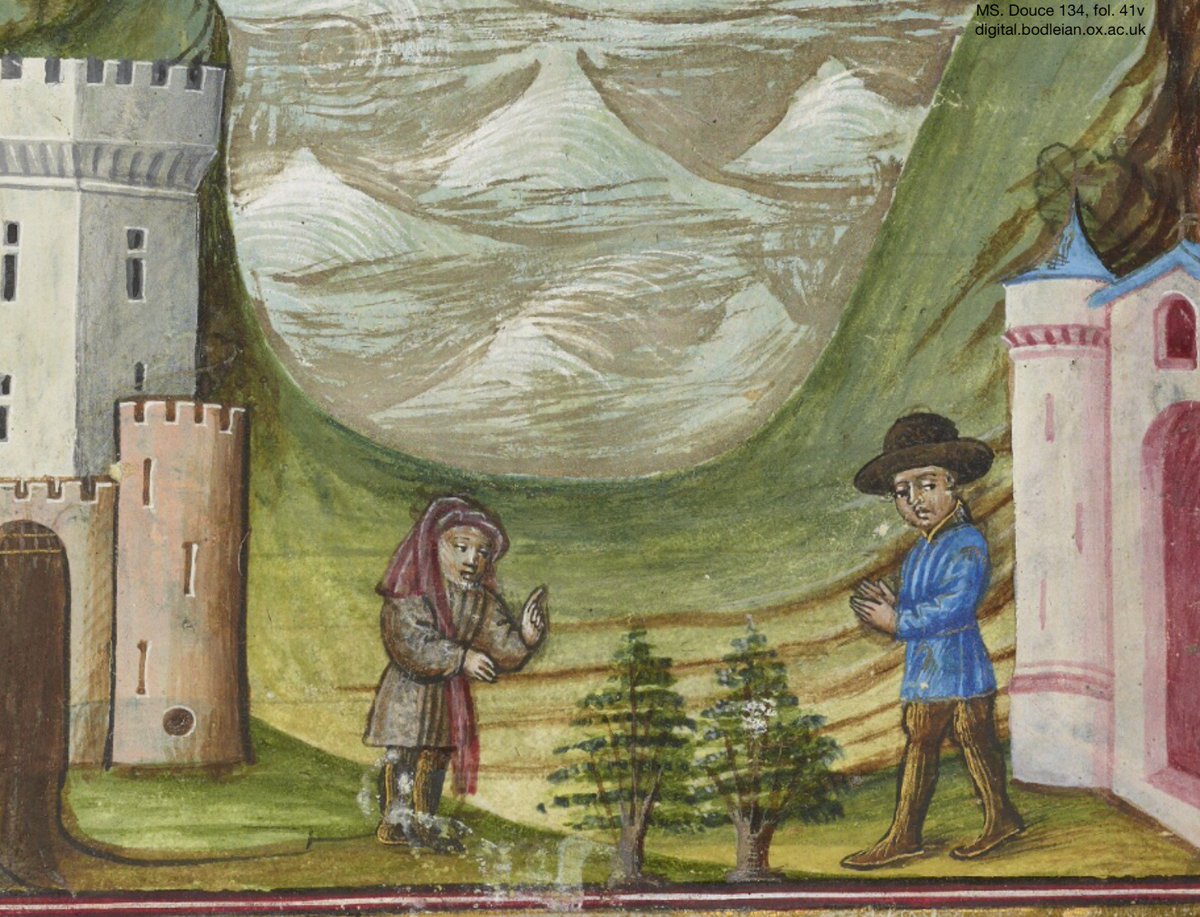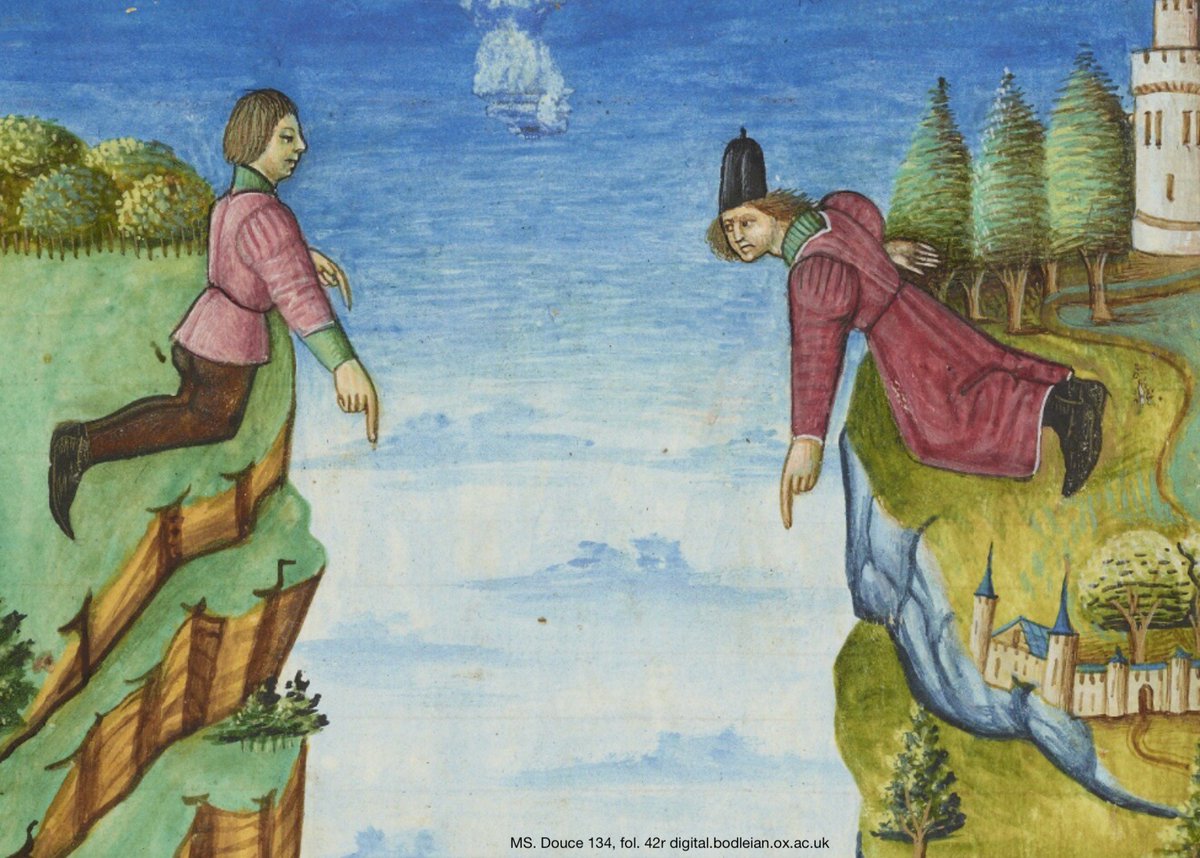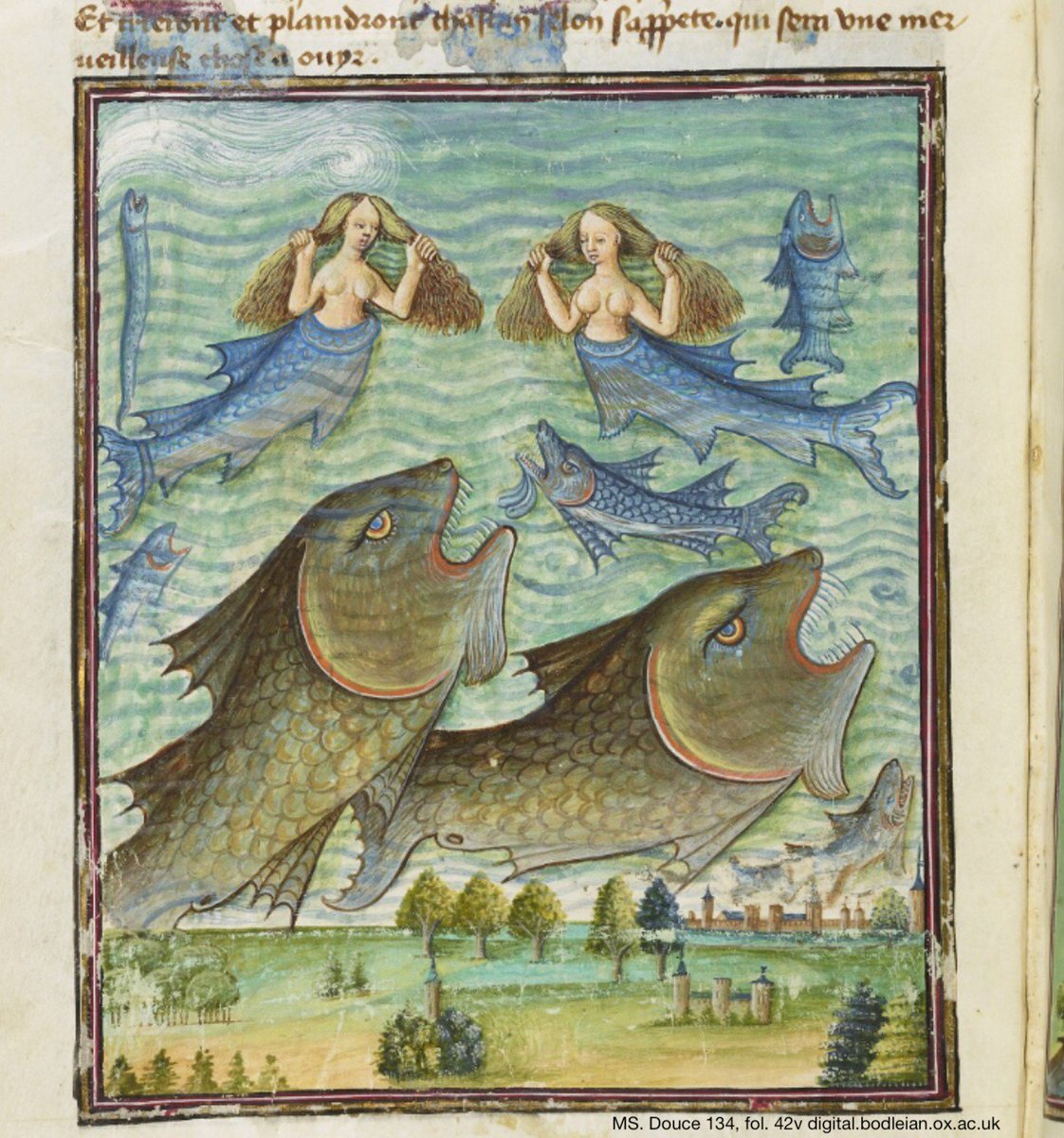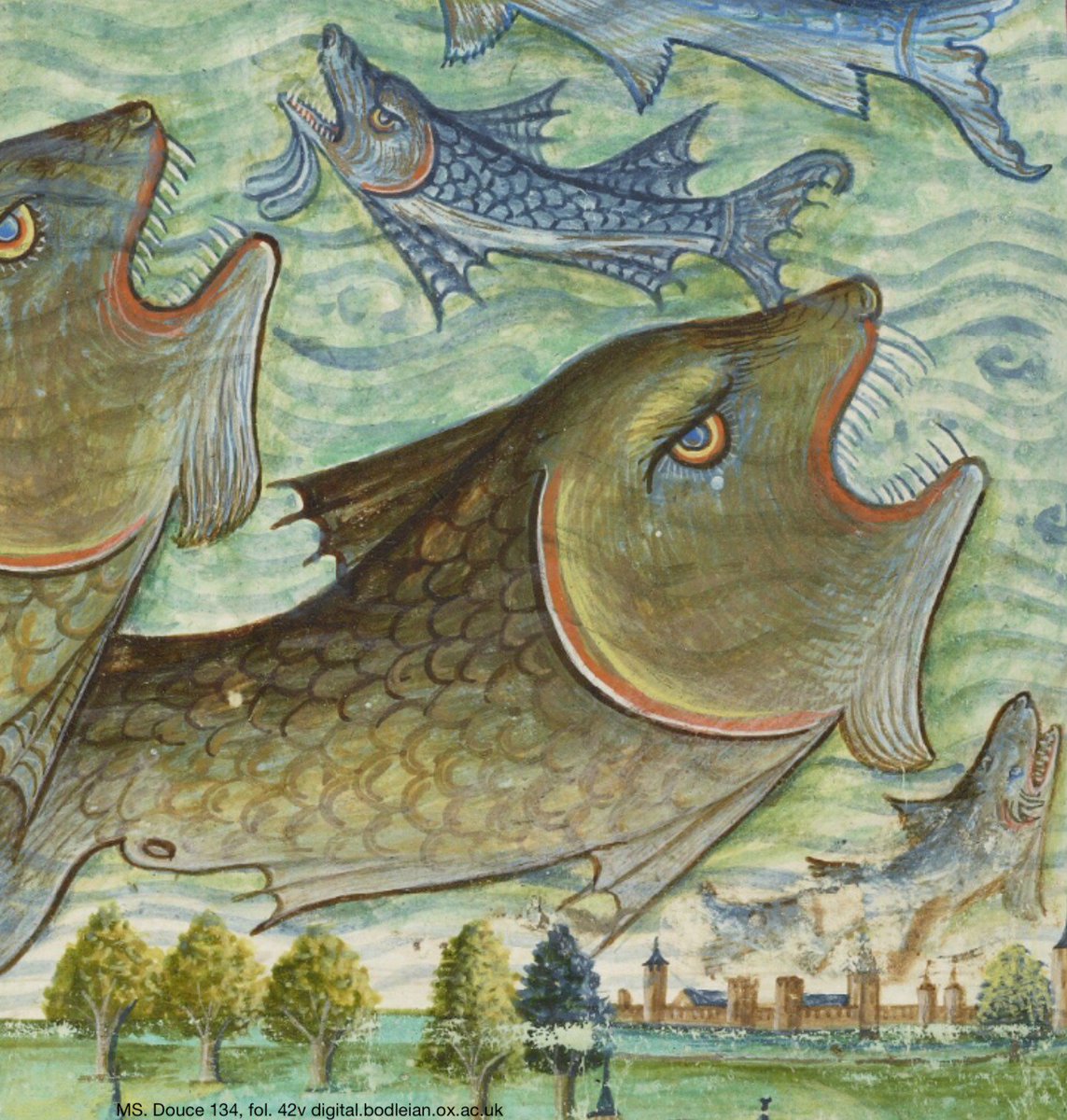Right, it's #InternationalDogDay, and boy (boi?) do we have a thread for you.
Animals on Show 1 (42): digital.bodleian.ox.ac.uk/inquire/p/07a9…
Animals on Show 1 (42): digital.bodleian.ox.ac.uk/inquire/p/07a9…
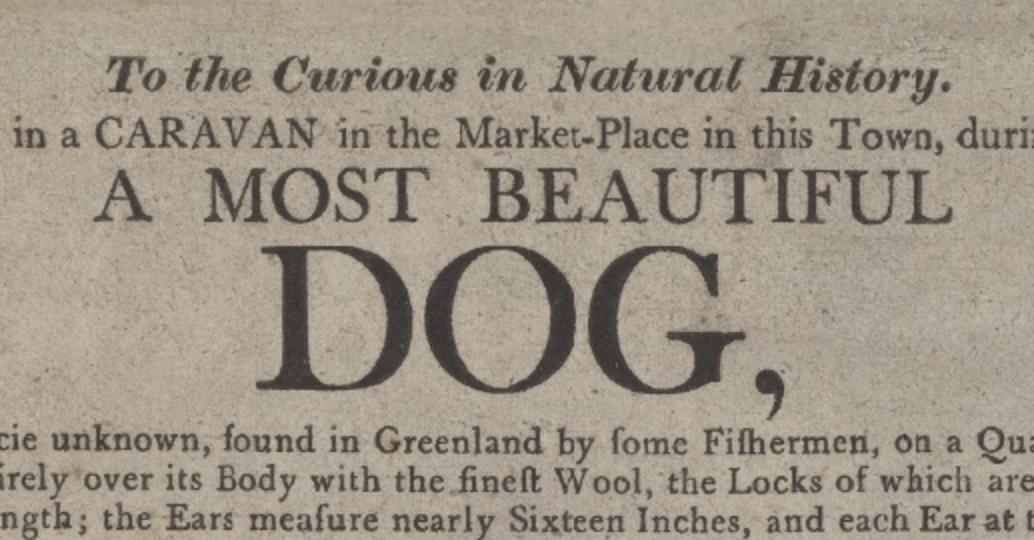
The English bulldog appears frequently in our digitized Curzon collection of cartoons from the Napoleonic Wars. Here, a bulldog named Wellington and a Russian bear attack a monkey representing Napoleon. 

Meanwhile, back in London, a "most Wonderful and Sagacious...LEARNED DOG" could be seen as part of a variety show. He could tell time, count money, and "spell any Person's Thoughts by the impenetrable Secret". digital.bodleian.ox.ac.uk/inquire/p/8cc7… #InternationalDogDay 
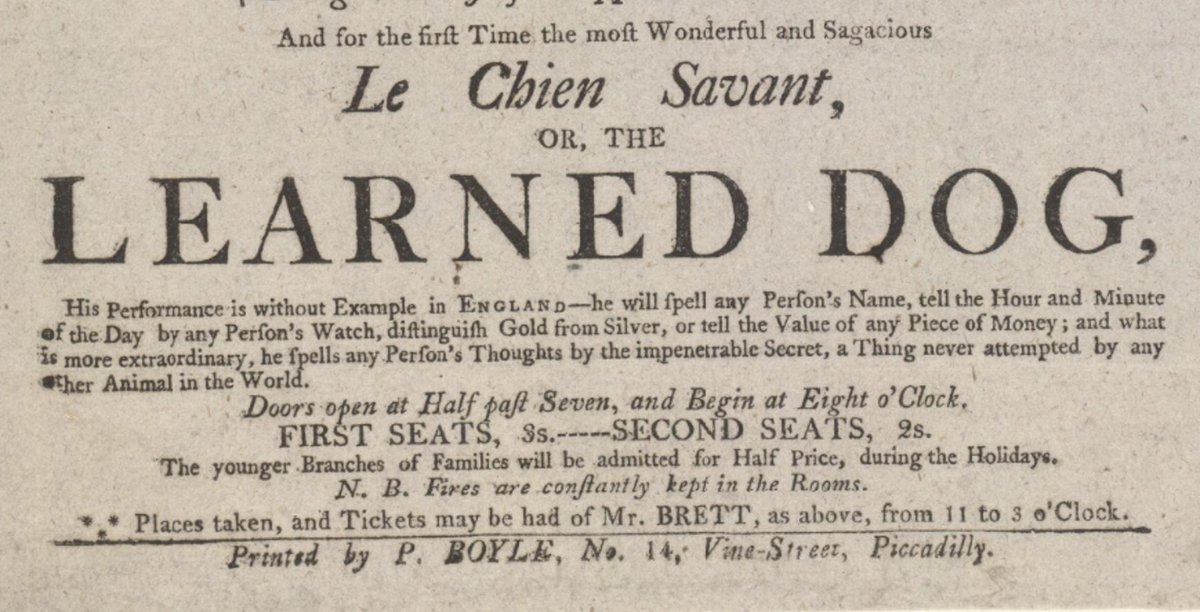
There was also the "MOST BEAUTIFUL DOG", discovered in Greenland, with 16-inch ears and a fine wool coat, who had astonished "the principal Nobility in England". These advertisements feature in our @jjcollephemera collection of printed ephemera. digital.bodleian.ox.ac.uk/inquire/p/07a9… 

@jjcollephemera Dogs danced and climbed ladders in "Mrs. Midnight's Animal Comedians", a 1753 show. digital.bodleian.ox.ac.uk/inquire/p/d6be… 


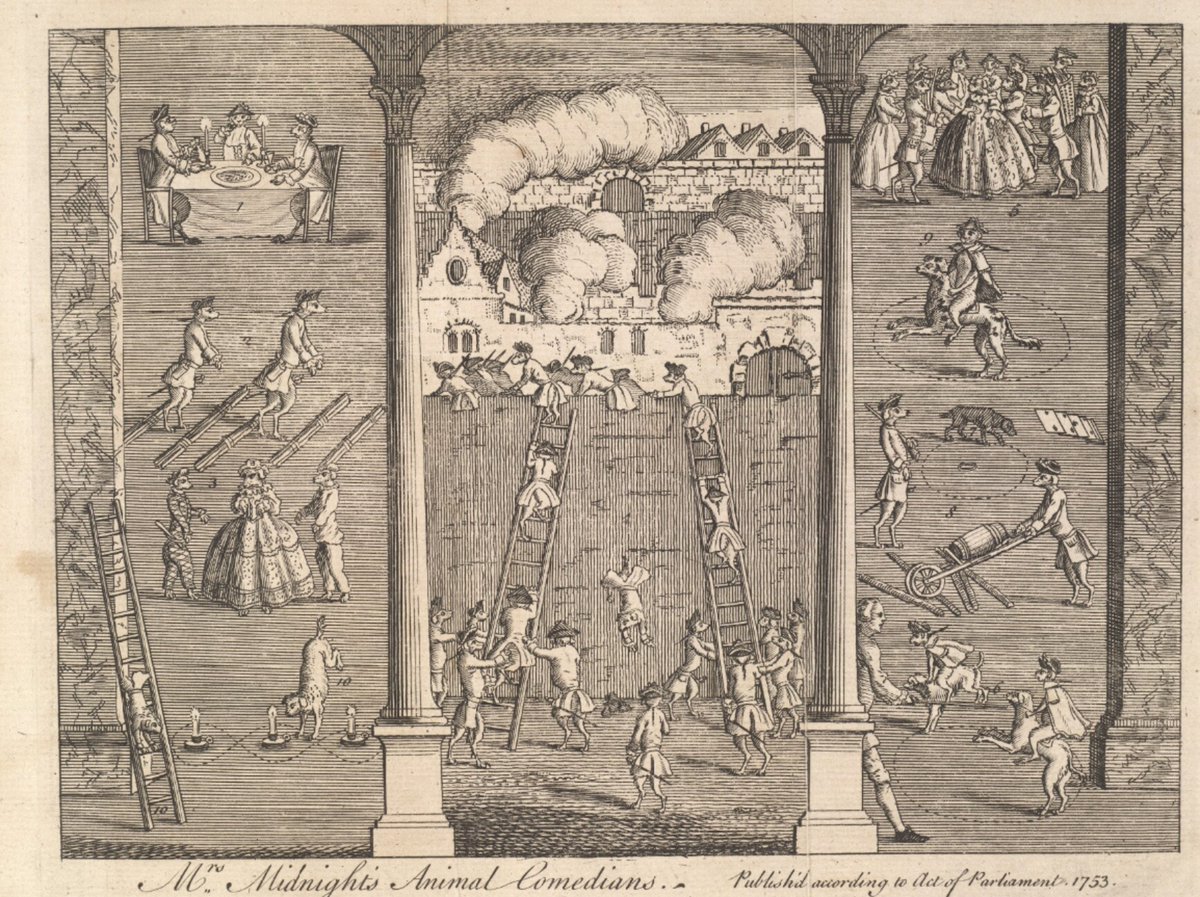
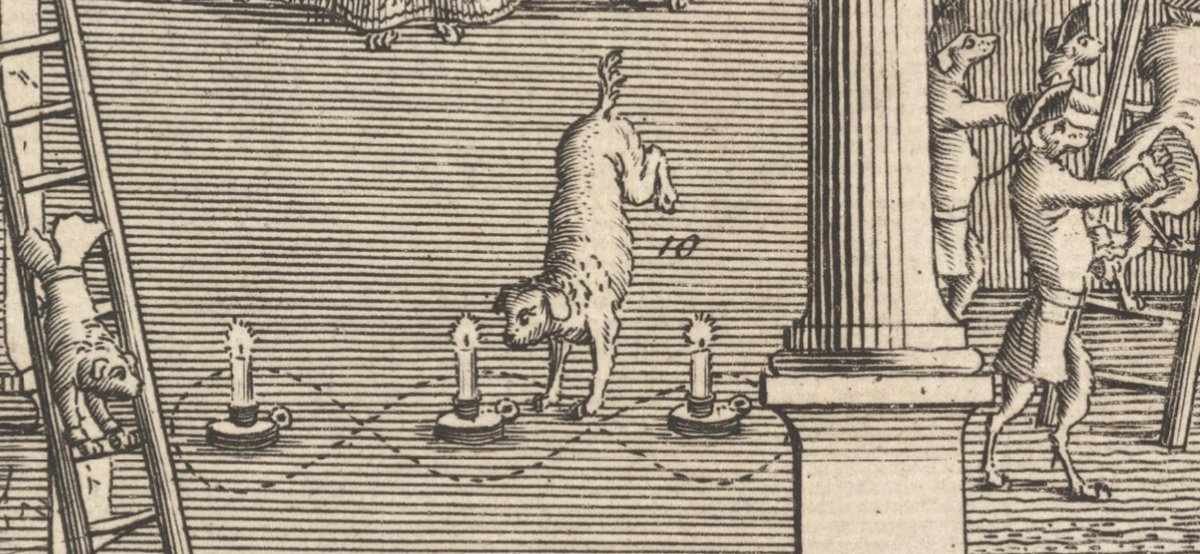
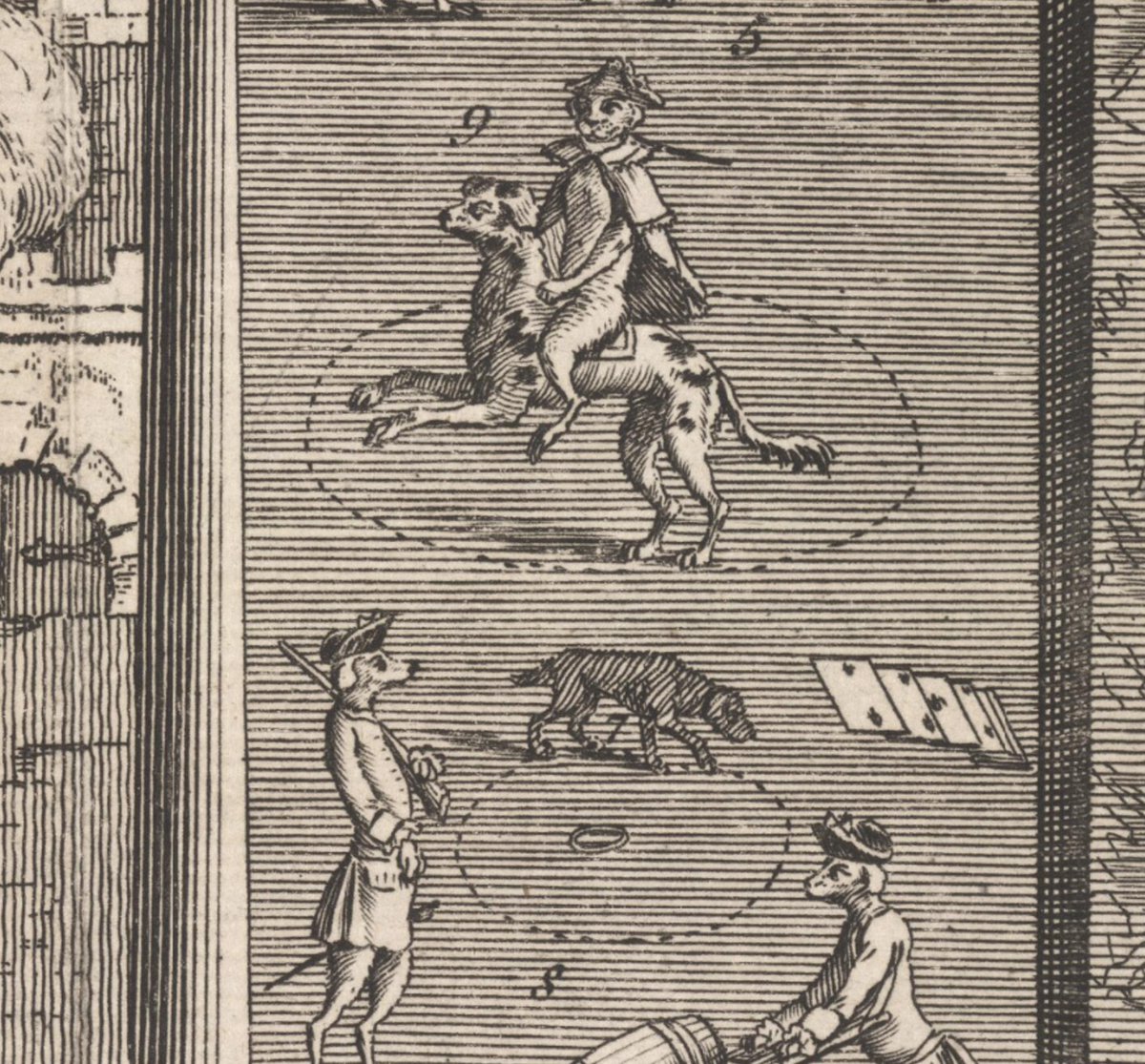
@jjcollephemera And now, the manuscript dogs. One French book of hours--a richly decorated medieval prayerbook--contains 12 pictures of the same two dogs. digital.bodleian.ox.ac.uk/inquire/p/b03c… #InternationalDogDay 





@jjcollephemera A while back, @bodleianlibs turned these 12 images into a medieval dog flipbook.
https://twitter.com/bodleianlibs/status/982237435596759040#InternationalDogDay
@jjcollephemera @bodleianlibs In medieval bestiaries--illustrated catalogues of real and mythical animals--dogs were described with a few principal traits. Firstly, they lick their own wounds to heal them:
digital.bodleian.ox.ac.uk/inquire/p/77ac…
digital.bodleian.ox.ac.uk/inquire/p/74b3…
digital.bodleian.ox.ac.uk/inquire/p/d3b2… #InternationalDogDay


digital.bodleian.ox.ac.uk/inquire/p/77ac…
digital.bodleian.ox.ac.uk/inquire/p/74b3…
digital.bodleian.ox.ac.uk/inquire/p/d3b2… #InternationalDogDay



@jjcollephemera @bodleianlibs Secondly, a dog will always return to its own vomit:
digital.bodleian.ox.ac.uk/inquire/p/78dd…
digital.bodleian.ox.ac.uk/inquire/p/78dd…

@jjcollephemera @bodleianlibs Thirdly--and perhaps most unfairly--a dog holding meat in its mouth, seeing its own reflection in water, will drop the real meat to try to pick up the reflection of meat.
digital.bodleian.ox.ac.uk/inquire/p/77ac…
digital.bodleian.ox.ac.uk/inquire/p/d3b2… #InternationalDogDay

digital.bodleian.ox.ac.uk/inquire/p/77ac…
digital.bodleian.ox.ac.uk/inquire/p/d3b2… #InternationalDogDay


@jjcollephemera @bodleianlibs Bestiaries also often include stories of exceptionally faithful dogs, such as King Garamantes' dogs, who rescued him from capture, and and a dog who died of grief watching over his master's body.
digital.bodleian.ox.ac.uk/inquire/p/e4bd…
digital.bodleian.ox.ac.uk/inquire/p/c48b…

digital.bodleian.ox.ac.uk/inquire/p/e4bd…
digital.bodleian.ox.ac.uk/inquire/p/c48b…


@jjcollephemera @bodleianlibs Two of our digitized bestiaries lead off their dog sections with a handsome picture of three dogs of different colours. The text explains that the word "canis" comes either from Greek or from the sound of a barking dog ("canere").
digital.bodleian.ox.ac.uk/inquire/p/eece…
digital.bodleian.ox.ac.uk/inquire/p/6963…

digital.bodleian.ox.ac.uk/inquire/p/eece…
digital.bodleian.ox.ac.uk/inquire/p/6963…


@jjcollephemera @bodleianlibs Dogs appear as a commonplace of courtly life in the medieval Romance of the Rose, whether accompanying a horseman or eating scraps under the table.
digital.bodleian.ox.ac.uk/inquire/p/7393…
digital.bodleian.ox.ac.uk/inquire/p/281a… #InternationalDogDay


digital.bodleian.ox.ac.uk/inquire/p/7393…
digital.bodleian.ox.ac.uk/inquire/p/281a… #InternationalDogDay



@jjcollephemera @bodleianlibs An unusually stocky, fluffy dog adorns the margins of MS. Douce 93, a Dutch book of hours.
digital.bodleian.ox.ac.uk/inquire/p/83b3… #InternationalDogDay


digital.bodleian.ox.ac.uk/inquire/p/83b3… #InternationalDogDay



@jjcollephemera @bodleianlibs Do we have medieval sheepdogs? We do.
digital.bodleian.ox.ac.uk/inquire/p/b00b…
digital.bodleian.ox.ac.uk/inquire/p/469b…
digital.bodleian.ox.ac.uk/inquire/p/aab0…
digital.bodleian.ox.ac.uk/inquire/p/85df…
(Actually, one of these might be a wolf.)



digital.bodleian.ox.ac.uk/inquire/p/b00b…
digital.bodleian.ox.ac.uk/inquire/p/469b…
digital.bodleian.ox.ac.uk/inquire/p/aab0…
digital.bodleian.ox.ac.uk/inquire/p/85df…
(Actually, one of these might be a wolf.)




We also have this slightly Seussian dog, determinedly chasing a goat. digital.bodleian.ox.ac.uk/inquire/p/192c… 

Medieval service dogs appear in MS. Bodl. 264 and MS. Douce 62, carrying the begging bowls of their blind owners.
digital.bodleian.ox.ac.uk/inquire/p/7333…
digital.bodleian.ox.ac.uk/inquire/p/b578… #InternationalDogDay

digital.bodleian.ox.ac.uk/inquire/p/7333…
digital.bodleian.ox.ac.uk/inquire/p/b578… #InternationalDogDay

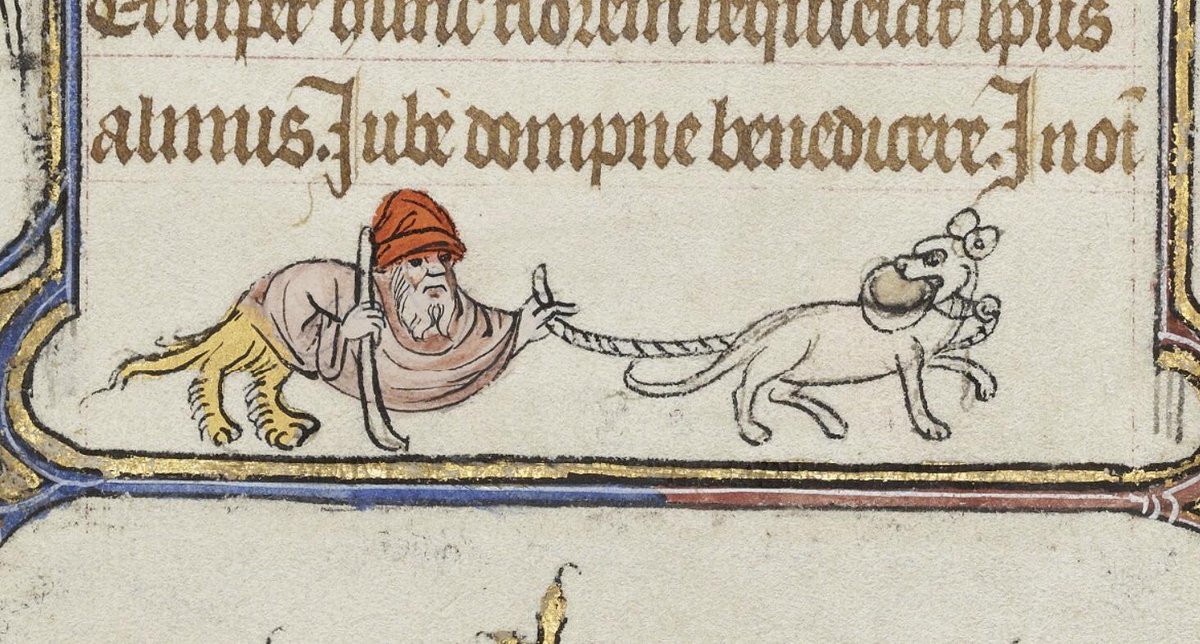
Other dogs in the margins of MS. Bodl. 264 dance, hunt, run, and simply lounge around.
digital.bodleian.ox.ac.uk/inquire/p/e3d4… #InternationalDogDay



digital.bodleian.ox.ac.uk/inquire/p/e3d4… #InternationalDogDay
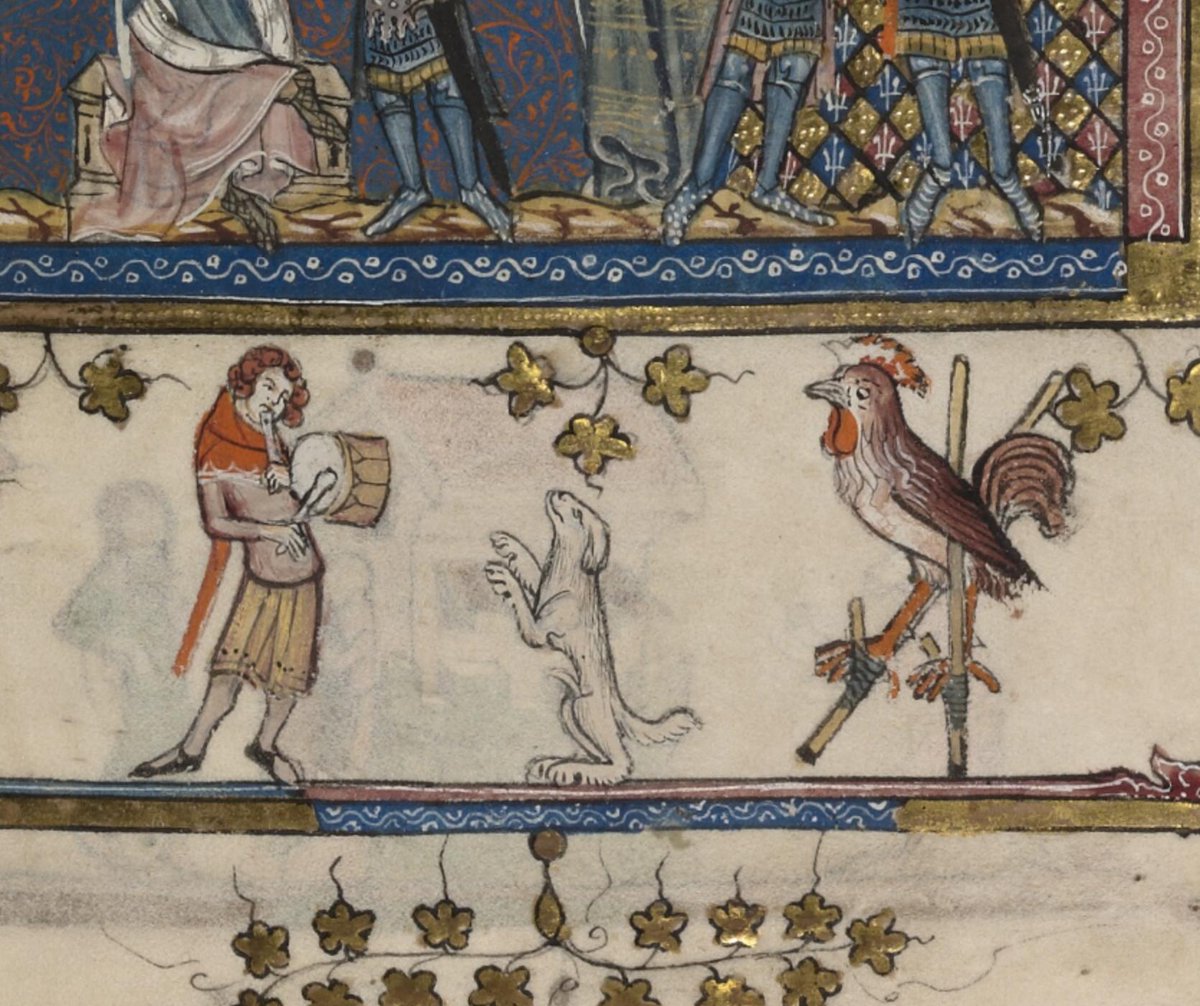
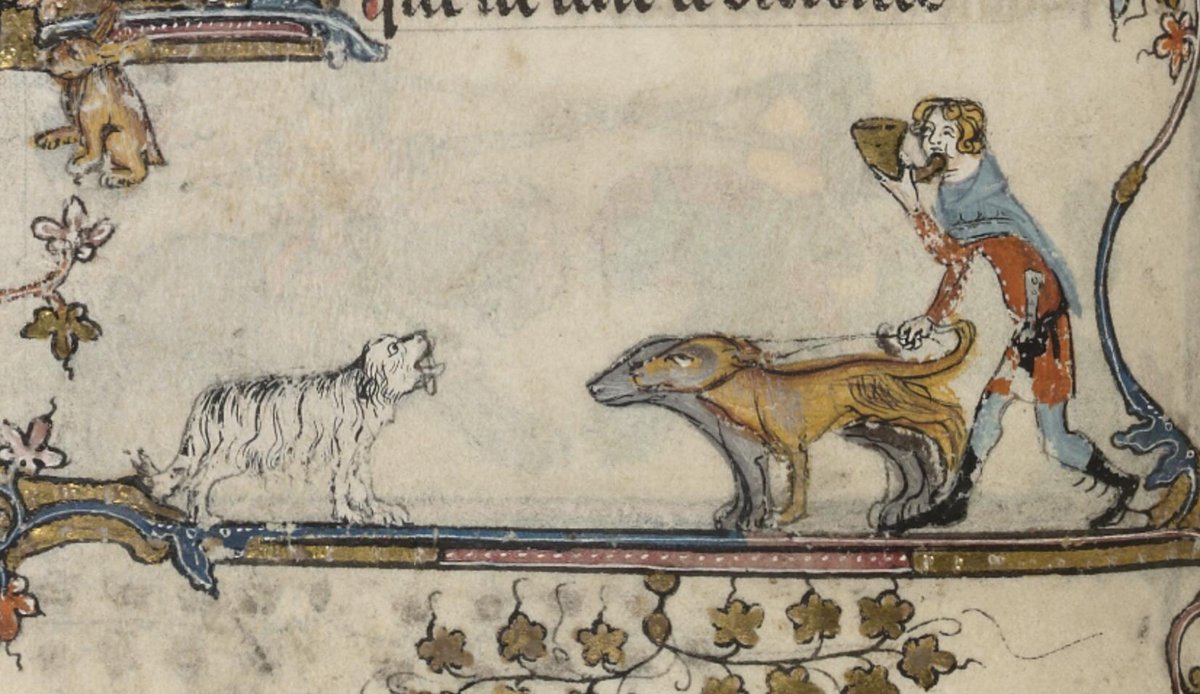


The more time you spend with illuminated manuscripts, the more dogs you might see. digital.bodleian.ox.ac.uk/inquire/p/5eb5… 


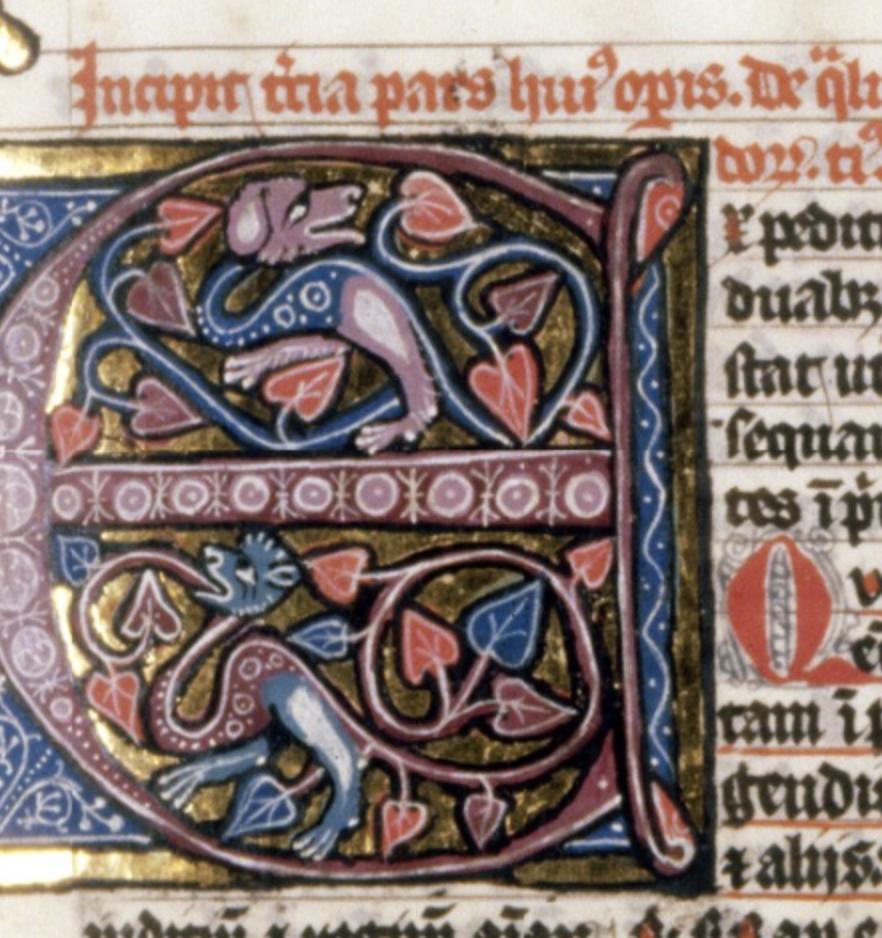
That goes for Hebrew manuscripts too, including our gorgeous #KennicottBible, which shows dogs hunting, howling and pricking their ears.
digital.bodleian.ox.ac.uk/inquire/p/ed5a… #InternationalDogDay


digital.bodleian.ox.ac.uk/inquire/p/ed5a… #InternationalDogDay



We'd love to see any dogs you've found in our digitized images. Here's one more from us, from MS. Douce 219. digital.bodleian.ox.ac.uk/inquire/p/93f2… #InternationalDogDay 

• • •
Missing some Tweet in this thread? You can try to
force a refresh





